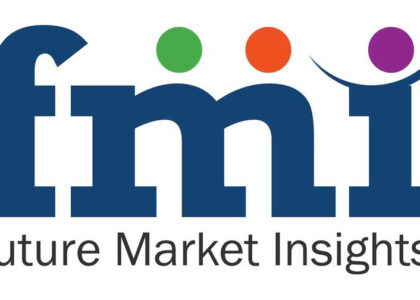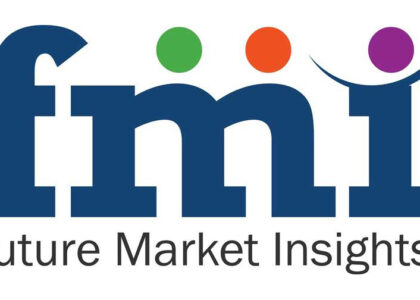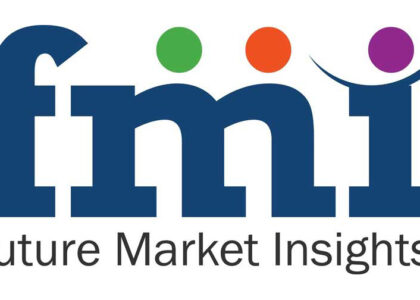Anticipated to hit US$ 10 billion in 2023, the global paper cups market is forecasted to maintain a steady Compound Annual Growth Rate (CAGR) of 4.4% from 2023 to 2033. Projections suggest a significant growth trajectory, with the market expected to attain a valuation of US$ 14 billion by the end of 2033. This expansion reflects ongoing consumer preferences for eco-friendly alternatives and the convenience offered by paper cups across various sectors. As sustainability concerns continue to drive market dynamics, the paper cups industry is poised for sustained growth and innovation to meet evolving demands in the years ahead.
Disposable cups such as paper baking cups and paper ice cream cups are crafted from paper and coated with either plastic or wax to prevent leakage, presenting a sustainable alternative to traditional plastic cups commonly employed in restaurants and food service applications. These paper cups offer an eco-friendly solution, aligning with the increasing global emphasis on reducing plastic waste and fostering environmentally conscious practices in the food and beverage industry.
Over the forecast period, India is poised to create a substantial absolute dollar opportunity, reaching US$ 40 million, driven by the nation’s burgeoning paper industry fueled by the cost-effectiveness of its raw materials. As the Indian economy continues to grow, there is a projected significant surge in paper consumption, underlining the pivotal role the country plays in the expanding global paper market.
Request Sample: https://www.futuremarketinsights.com/reports/sample/rep-gb-7591
Single-use paper cups are gaining attention in food service industry such as hotels, restaurants, and online delivery processes. These businesses require disposable plates, bowls, and cups for serving purposes. There are numerous opportunities that are likely to be created by ‘away-from-home’ consumption of beverages.
A fast-paced lifestyle has influenced food & beverage consumption patterns to a certain extent. This would create lucrative opportunities for growth in the paper cups market, which manufacturers must focus on.
In the next ten years, focus of manufacturers on the millennial population is likely to intensify. Surging millennial population is expected to be a key driver to expansion of the global paper cups market, as millennials have been known to experience nearly twice the number of away-from-home situations, as compared to adults.
To expand their businesses, manufacturers of paper cups must know what the modern consumer wants and anticipate how their preferences may change over time. Manufacturers of paper cups are expected to mainly focus on the design and appearance of their products to target specific consumers. For instance, high-quality printing on paper cups has a high consumer appeal.
Key Takeaways from Paper Cups Market
- By cup type, the hot beverage cups segment is likely to account for more than 65% of market share by 2023.
- In terms of cup capacity, the 151 to 350 ml segment is expected to generate the lion’s share in the global paper cups market by 2033.
- The food service industry by end user is anticipated to account for 3% of the global paper cups market share by 2023.
- Germany paper cups market is estimated to record a CAGR of 3% during the forecast period.
- The United Kingdom paper cups market is set to create an incremental growth opportunity of US$ 20 million in the next ten years.
Market Drivers:
- Environmental Awareness: Increasing awareness about the environmental impact of plastic products has driven the demand for eco-friendly alternatives like paper cups. Consumers and businesses are increasingly opting for sustainable packaging solutions.
- Regulatory Measures: Stringent regulations and bans on single-use plastics in many regions have accelerated the adoption of paper cups. Governments and regulatory bodies are implementing policies to reduce plastic waste, creating opportunities for paper cup manufacturers.
- Corporate Sustainability Initiatives: Many corporations are aligning their strategies with sustainability goals, including reducing their carbon footprint and plastic usage. Switching to paper cups is often part of these initiatives, driving demand for eco-friendly alternatives.
- Consumer Preference: Changing consumer preferences towards sustainable and recyclable packaging materials have boosted the demand for paper cups. Consumers are more inclined to support businesses that offer environmentally friendly options.
- Technological Advancements: Ongoing innovations in paper cup manufacturing technologies have improved the quality, durability, and aesthetic appeal of paper cups. Advanced printing techniques and materials enhance branding opportunities, attracting more businesses to use paper cups.
- Cost Competitiveness: With advancements in manufacturing processes and economies of scale, the cost of producing paper cups has become more competitive compared to plastic alternatives. This cost parity makes paper cups a viable option for businesses.
Request Report Methodology: https://www.futuremarketinsights.com/request-report-methodology/rep-gb-7591
Market Restraints:
- Price Volatility of Raw Materials: Fluctuations in the prices of raw materials such as paper pulp can impact the production costs of paper cups. Instability in raw material prices can pose challenges for manufacturers in maintaining profitability.
- Limited Heat Resistance: Paper cups may have limitations in terms of heat resistance compared to plastic alternatives, which can be a concern for certain applications such as hot beverages. Innovations in paper cup designs and materials aim to address this issue.
- Lack of Recycling Infrastructure: Although paper cups are recyclable, the lack of appropriate recycling infrastructure in some regions hinders their proper disposal and recycling. This limitation affects the overall sustainability credentials of paper cups.
- Competition from Alternative Materials: Paper cups face competition from alternative materials such as compostable plastics and reusable containers. Businesses may opt for these alternatives based on specific needs or preferences, affecting the demand for paper cups.
- Perception of Quality: In some cases, paper cups may be perceived as less durable or lower in quality compared to plastic or other materials. Overcoming this perception barrier requires continuous improvement in the design, functionality, and branding of paper cups.
“Increasing popularity of paper cups owing to rising installation of vending machines in offices, recreational parks, shopping malls, and airports would drive sales in the global market. Key companies are likely to spend huge sums in the development of unique products to expand their portfolios,” says a lead analyst at Future Market Insights.
Increasing Demand for Tea and Coffee to Push Sales of Disposable Cups for Hot Drinks
Restaurants, cafés, and hotels favor hot beverage cups for their double-walled design, effectively maintaining temperature and heat-bearing properties. With tea and coffee consumption surpassing that of cold beverages, this targeted segment is projected to command a substantial 64.7% market share by 2023. The demand for cups with efficient features and heat-insulating qualities is crucial for the convenient consumption of hot drinks. As hotter beverage cups contribute significantly to overall hot beverage consumption, the global paper cup market is well-positioned to capitalize on this lucrative growth opportunity, driven by the sustained preference for warm beverages across diverse consumer segments.
Competition Landscape:
Few key players operating in the global paper cups market include
- Berry Global Group Inc.,
- Huhtamaki Oyj,
- Georgia-Pacific LLC,
- Genpak, LLC,
- Pactiv LLC,
- Dart Container Corporation,
- Frugal Pac Limited,
- Grupo Phoenix Capital Limited,
- F Bender Limited,
- ConverPack Inc., and
- Sabert Corporation
- among others.
Buy Now/Purchase: https://www.futuremarketinsights.com/checkout/7591
Key Segmentations:
By Cup Capacity:
- Up to 150 ml
- 151 to 350 ml
- 351 to 500 ml
- Above 500 ml
By Cup Type:
- Cold Beverage Cup
- Hot Beverage Cup
By Sales Channel:
- Supermarket/Hypermarket
- Distributor
- Departmental/Specialty/Discount Stores
- Online Sales
By End User:
- Food Service
- Institutional
- Household
By Region:
- North America
- Latin America
- Western Europe
- Eastern Europe
- Asia Pacific
- Middle East and Africa
About Future Market Insights (FMI)
Future Market Insights, Inc. (ESOMAR certified, recipient of the Stevie Award, and a member of the Greater New York Chamber of Commerce) offers profound insights into the driving factors that are boosting demand in the market. FMI stands as the leading global provider of market intelligence, advisory services, consulting, and events for the Packaging, Food and Beverage, Consumer, Technology, Healthcare, Industrial, and Chemicals markets. With a vast team of over 5000 analysts worldwide, FMI provides global, regional, and local expertise on diverse domains and industry trends across more than 110 countries.
Contact Us:
Future Market Insights Inc.
Christiana Corporate, 200 Continental Drive,
Suite 401, Newark, Delaware – 19713, USA
T: +1-845-579-5705
For Sales Enquiries: sales@futuremarketinsights.com
Website: https://www.futuremarketinsights.com
LinkedIn| Twitter| Blogs | YouTube





